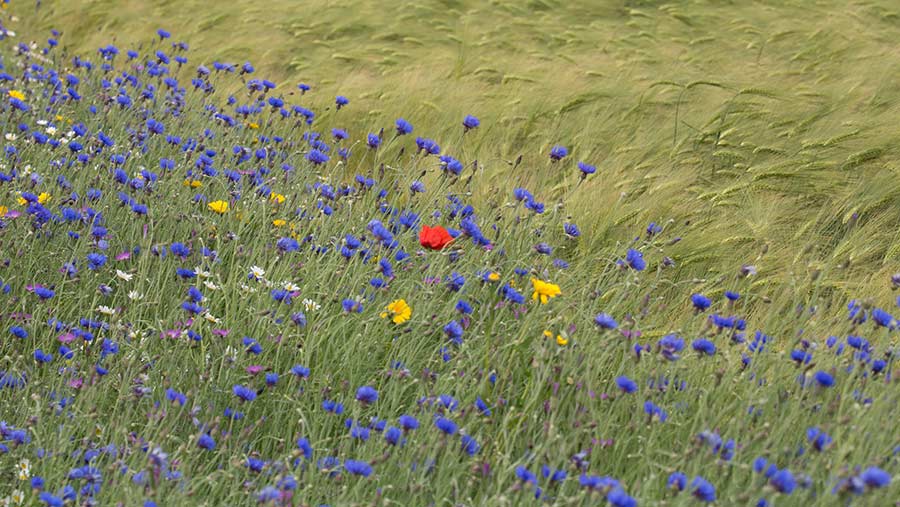Defra adds six new standards to SFI scheme for 2023
 © TIm Scrivener
© TIm Scrivener Industry leaders have welcomed Defra’s response to their calls for a more robust Sustainable Farming Incentive for 2023, which provides much-needed clarity for farmers planning their businesses.
Six more standards have been introduced for this year, including payments for actions on hedgerows, grassland, arable and horticultural land, pest management and nutrient management.
These build on the three existing standards to improve soil health and moorlands introduced in 2022, for which almost 1,900 farmers have already signed agreements.
See also: Defra U-turn on Countryside Stewardship payments to benefit thousands
Eligible farmers and land managers in England will be able to apply online for the new Sustainable Farming Incentive (SFI) options from this summer.
The Tenant Farmers Association (TFA) said Defra had adopted a “pick and mix” approach to the SFI 2023 scheme – a key part of the government’s Environmental Land Management scheme – which would allow farmers greater flexibility to choose a combination of actions that work for their farms.
“There really should be something for everyone now,” said TFA farm policy adviser Lynette Steel.
But Ms Steel said the “devil will be in the detail” on how the proposals will work practically on the ground, and whether the payments will be generous enough to attract enough farmers to help the government meet its environmental goals.
Details of the payments for the new SFI 2023 options were revealed in an “Environmental Land Management update” prospectus. Some options appear to pay much more money than the existing three standards.
For example, farmers will be paid £989/year to complete an integrated pest management (IPM) assessment and produce an IPM plan, and £589/year for a nutrient management assessment and produce a review report.
A £45/ha payment is available for no use of insecticide.
Geoff Sansome, head of agriculture at Natural England, said with IPM and nutrient management, as well as the existing soils standards, there was now a “range of actions which firmly sit alongside, or actually underpin food production”.
Higher payments
But he noted that the most popular Countryside Stewardship (CS) arable and grassland options had been “mirrored” under the SFI framework, with some attractive payment rates. For example, farmers can be paid £732/ha under the SFI to establish and maintain winter bird food mixes for farmland birds.
The SFI framework allows for shorter, three-year agreements and quarterly payments as well as a more simple application process.
Defra has stressed, however, that farmers cannot be paid twice for the same actions, but they can “stack” revenue streams in different schemes.
Mr Sansome advised farmers to look at the margins they can achieve within the individual SFI actions.
“For some, this may mean significant change and it might not stack up; for others, they will be close to, or meeting, the action requirements already,” he added.
Martin Lines, chairman of the Nature Friendly Farming Network, gave a cautious welcome to the new details on the SFI.
But he added: “There remains the need for join-up between actions to avoid a piecemeal approach. While it’s not perfect, it’s a start.”
Further updates on Countryside Stewardship Plus and Landscape Recovery
Defra has revealed further details on what farmers will be paid to deliver an enhanced version of the Countryside Stewardship scheme, which will see about 30 additional actions available to farmers by the end of 2024.
The expansion builds on the more than 250 actions farmers can take at present, with the scheme seeing a 94% increase in uptake since 2020 and is now part of thousands of farm businesses.
The next round of Countryside Stewardship (CS) Higher Tier will open in February, with Mid Tier following in March.
CS Plus – previously known as the Local Nature Recovery scheme – will reward farmers for taking co-ordinated action, working with neighbouring farms and landowners to support climate and nature aims.
Options will include managing floodplain meadows to reduce flood risk and improve biodiversity, restoring and maintaining peatland for carbon capture and storage, and enhancing and managing woodland to mitigate against drought and enhance its resilience to climate change.
Meanwhile, Defra has confirmed it will open applications for the second round of the Landscape Recovery scheme in the spring to support up to 25 ambitious, large-scale nature recovery projects, focusing on net zero, protected sites and habitat creation.
